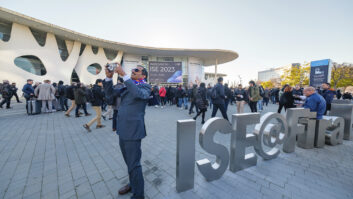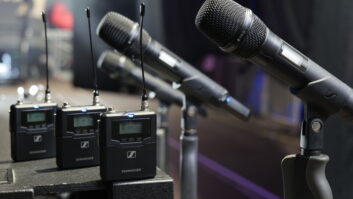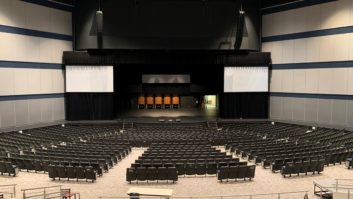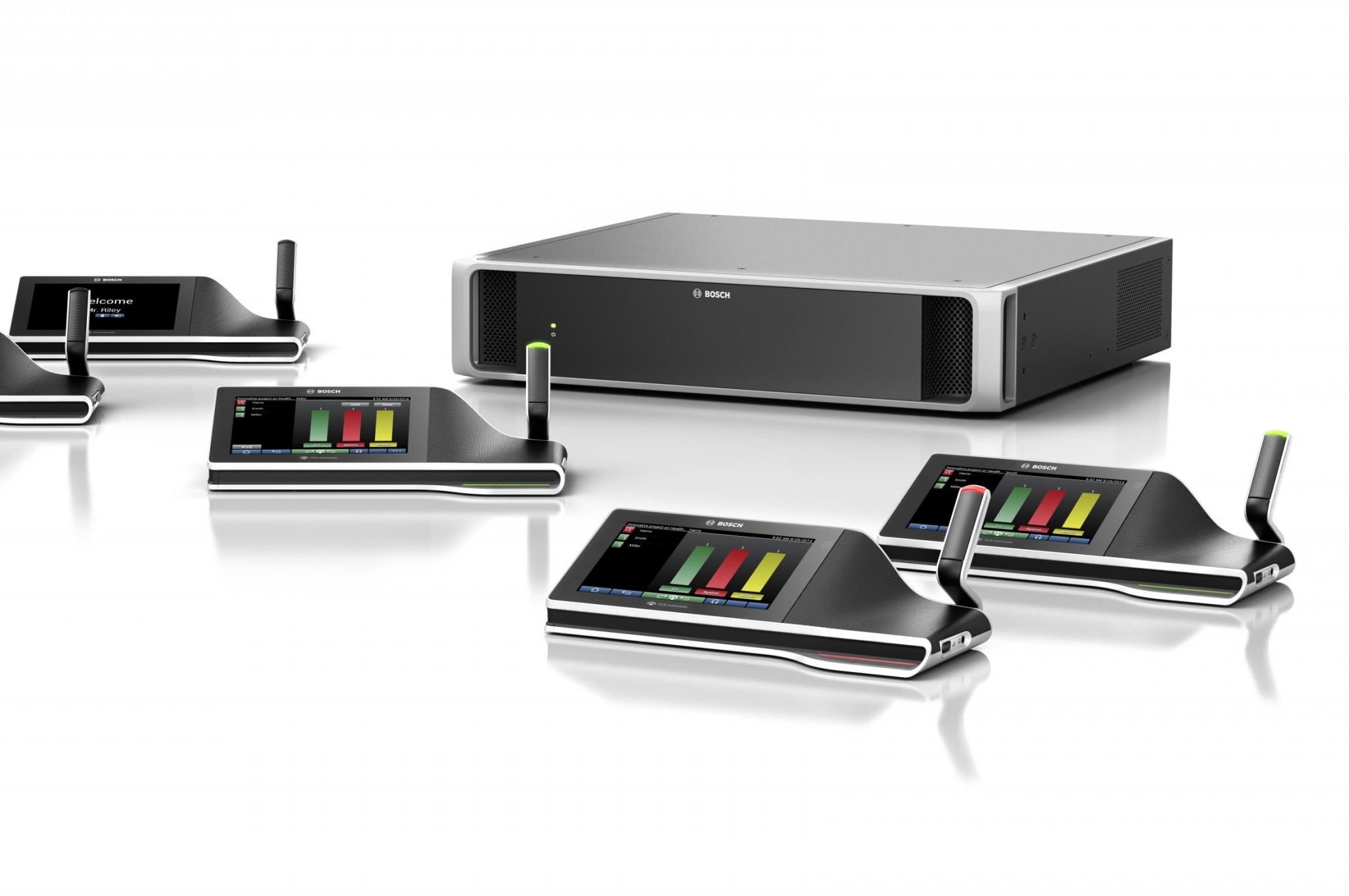
Conference system manufacturers are differentiating their offerings through features such as document control, Cloud-based management and automatic audio calibration. We consider seven of the best.
Bosch DCN integrates with existing infrastructure
Bosch’s addition to the conference system market stands out as the first IP-based conference system built on the OMNEO media networking architecture. The DCN integrates audio, video and meeting content, such as documents and presentations, in a single system; and because it is IP-based, it can be integrated easily with other systems installed in meeting environments, such as content management, webcasting and room control systems, for cost-effective installation and maintenance.
The conference system can grow as needs evolve: it can be scaled up to 750 multimedia devices and can use a multi-subnet IP network. There are apps and software available to add functionality, and options to share content on smart devices like Clickshare and Apple TV via third-party apps. AMX, Crestron or teleconferencing apps can also be run on the DCNM-MMD devices.
Several Bosch audio technologies are present in the system. The plug-in microphone uses high-directive technology for clear speech without delegates needing to be right next to the mic. The multimedia devices feature a built-in two-way loudspeaker system for high levels of intelligibility and sound quality. Finally, intelligent acoustic feedback suppression adapts with the environment to maximise speech intelligibility when higher volume levels are required.
Audio-Technica combines quality and security
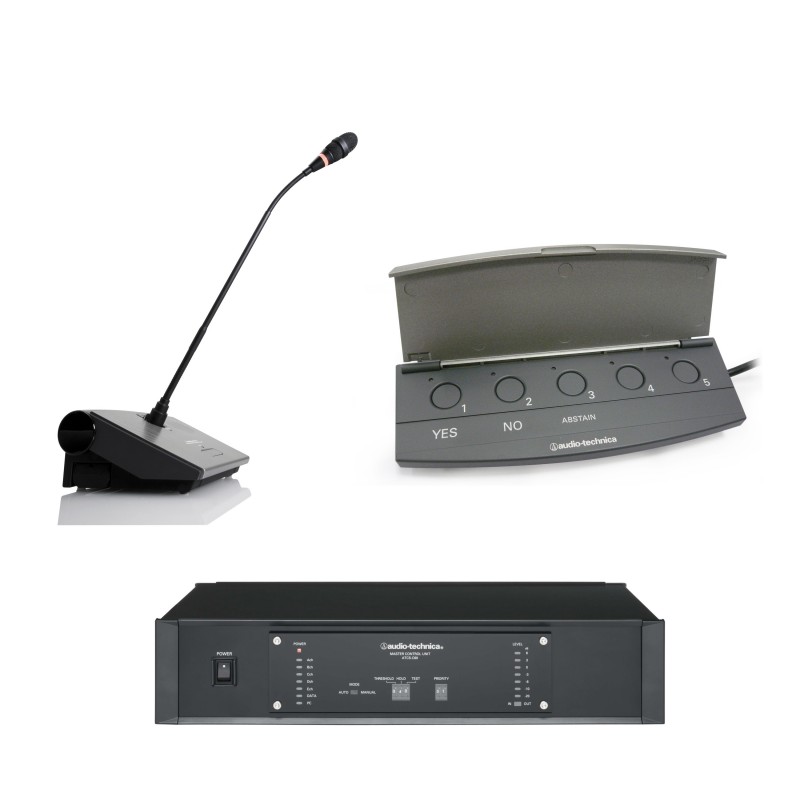
Audio-Technica has combined audio quality and security with the ATCS-60 infrared conference system. The use of wireless infrared ensures the signal cannot leave the conference space and so is not subject to accidental or deliberate eavesdropping; it is also immune to interference from radio signals.
The system has an extensive feature set including multi-language translation channels, automatic voice detection and camera control.
Thanks to its modular design, the system allows installers to supply a system that suits the customer’s current budget but also leaves their options open to expand as and when usage requirements change in the future. This expansion can be achieved by adding extra voting modules (ATCS-V60) and using range-extending transceivers.
Gonsin takes the app approach
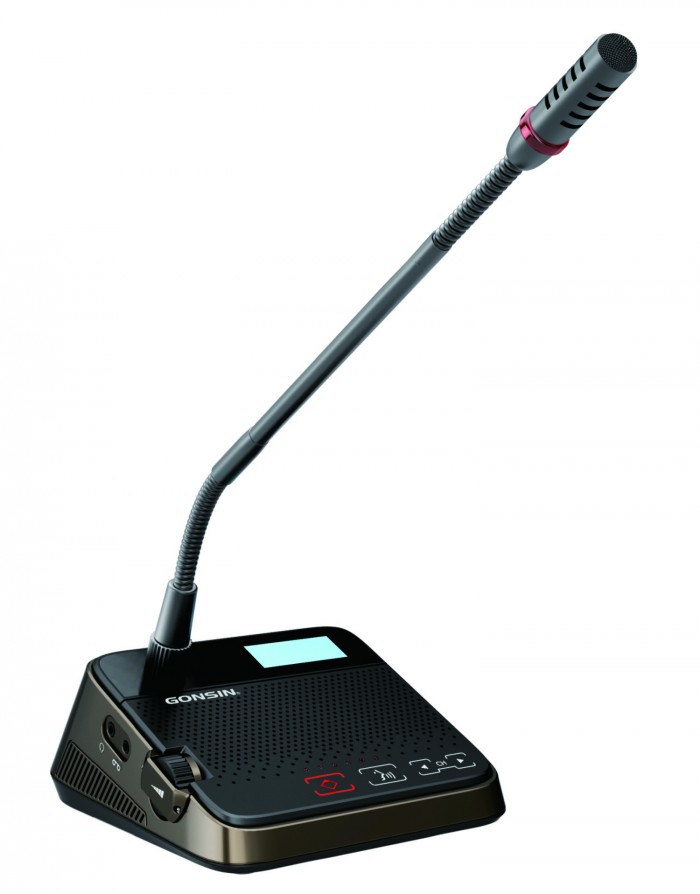
Gonsin has a new paperless multimedia congress system that the company says differentiates itself from other such systems by its openness, flexibility and ease of use. The DCS-2021 is an open and standardised solution that uses apps extensively to realise the paperless multimedia function and to integrate external devices such as iPads and smartphones.
The flexibility it offers means the system can be added to, based on changing requirements and budgets. In the future, if users want improved functionality they only have to get an app upgrade rather than replacing any hardware.
A central feature of the DCS-2021 is the document annotation functionality, which means every delegate can annotate a document and have this displayed on all terminals simultaneously.
Xavtel Senator auto-calibrates to the room
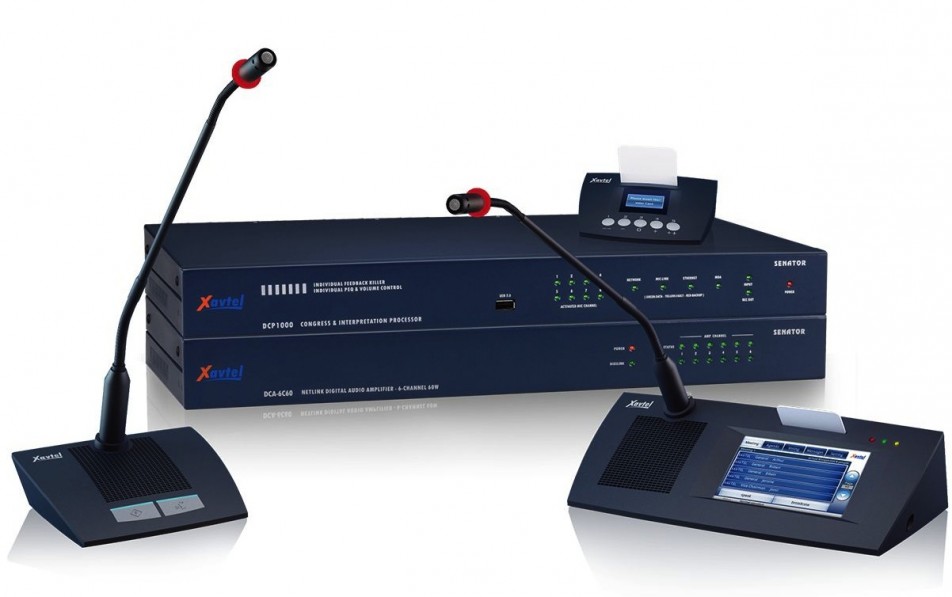
The Xavtel Senator conference system aims to give integrators and end users the ‘total conference room solution’; it includes a conference master unit (DCP1000) and digital distribution box (DDB104) and a digitally connected six-channel conferencing amplifier (DCA660).
The system is easy to use and comes with all DSP functions inside the conference master unit so there are no external DSP units (plus the associated cabling) to deal with. An automatic ‘Mix-Minus Calibration’ function manages room acoustics. Auto-calibration takes five to 15 minutes and allows for changes to the seating plan mid-conference without needing an engineer to adjust the equipment. Other notable features include automatic voice gate, FBX, PEQ, auto-mixers and RS232 camera control.
The second release of the Senator system, available in Q1 next year, will feature an optional acoustic echo cancellation (AEC) board, which will allow the Senator to be used within a teleconferencing or videoconferencing system.
TeamConnect from Sennheiser offers wide compatibility
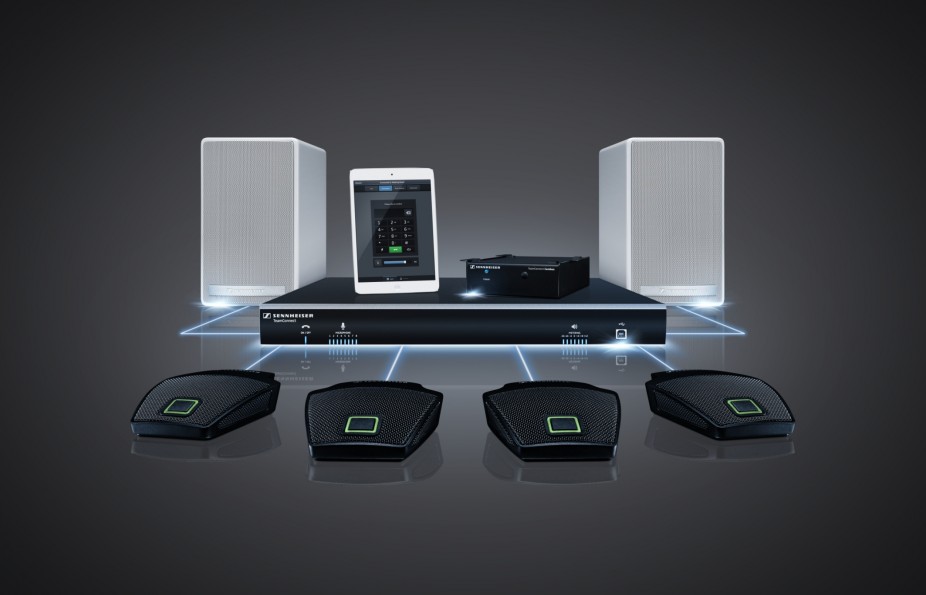
Sennheiser TeamConnect is said to allow integration to more communication transports – including analogue ‘POTS’ lines, VoIP and mobile devices – than any other like-for-like teleconferencing product. It also makes full use of BYOD (bring your own device) without compromising sound quality.
TeamConnect has been designed to be easy to use for the end user and integrator alike. End-to-end ‘Flex’ and ‘Fix’ packages simplify installation. A single package includes a central unit that offers multiple inputs each with acoustic echo canceller; combox; microphones (fixed-install mics for the desktop or ceiling and/or individual table mics); speakers with inbuilt power supply and wall mount; and pre-terminated cables.
TeamConnect can be used as a straightforward audio playback system for those presenting on any PC or Mac presentation or slideshow software, using the USB connector. However, it can also be expanded using the DW Office headset UC endpoints, as well as large-scale discussion systems like the Sennheiser ADN and ADN-W, allowing delegates to communicate with multiple parties in remote locations.
Televic keeps it simple with uniCOS
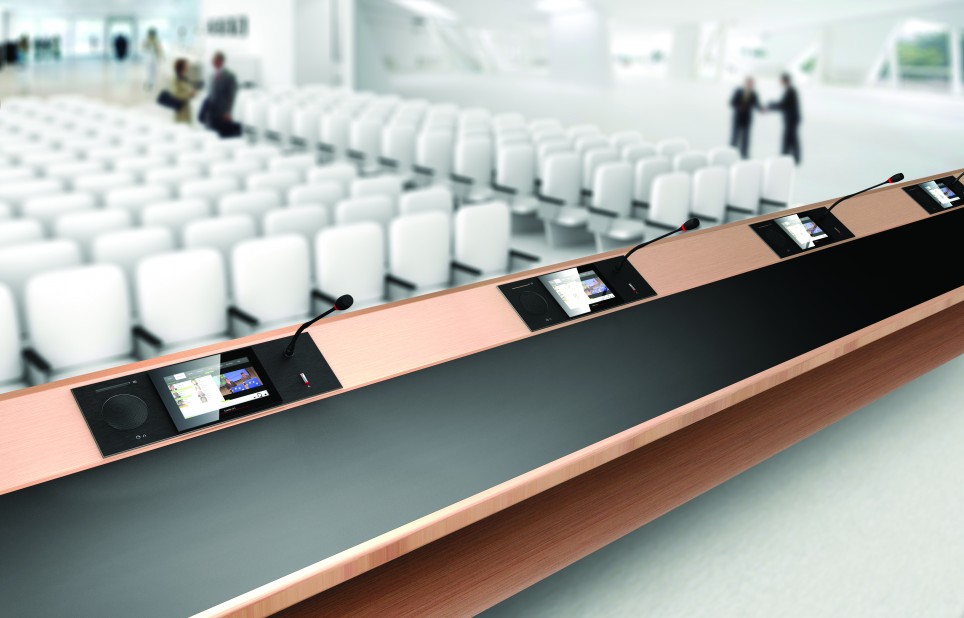
The Televic uniCOS multimedia conference system is powered by Plixus conference network technology. It combines audio, video and document distribution on a single Cat cable, dispensing with system components such as video splitters and distribution amplifiers and using less cabling.
The system distributes HD with low latency, preserving lip-sync. A major advantage for the user is that meetings can be held efficiently with less paper; the chairman has central control over what delegates can view.
The design also increases reliability and system resilience in mission-critical applications with interfacing to the outside world through the Plixus Engine via Dante; nothing from third parties is carried on the network itself.
Revolabs Executive Elite goes wireless with the Cloud
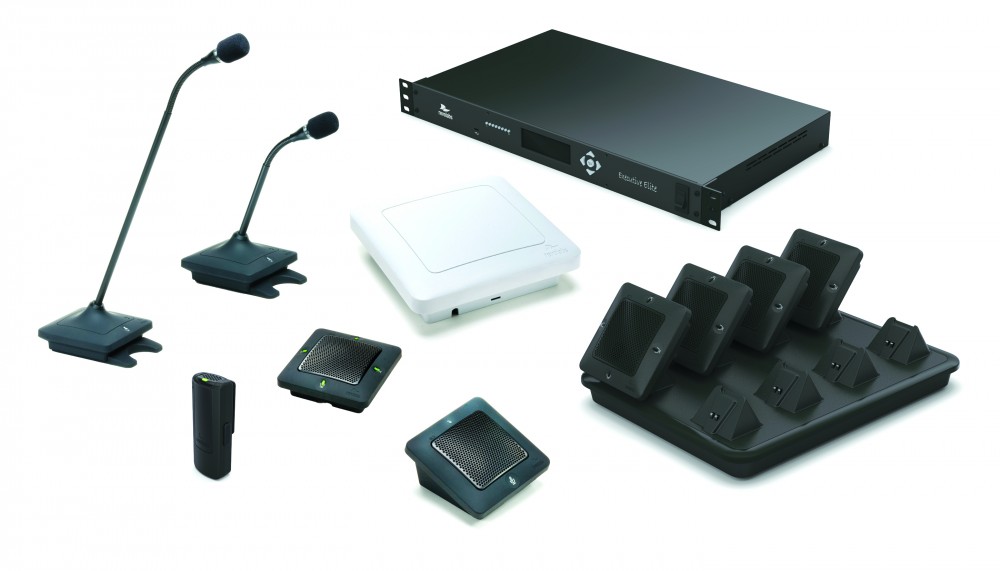
The distinguishing feature of the Revolabs Executive Elite wireless microphone system is the Cloud server option, which allows users access to a combination of local and Cloud-based capabilities.
For remote management, including third-party installations, the Cloud-based environment provides management of all customer-specific Executive Elite installations on a single screen. Administrators can access information such as microphone status, audio and radio signal strength, and system performance via an intuitive web-based interface.
The four- and eight-channel system is designed for medium-sized to large applications. To facilitate installation, Executive Elite’s remote antenna receiver and base units connect via a standard Cat5e or Cat6 cable with power over Ethernet (PoE) support. The system’s redesigned microphones boast superior audio pickup, improved signal-to-noise ratio, easy operation and enhanced digital signal communication over wireless links – plus what the company calls an ‘elegant Fortune 500 look’.
